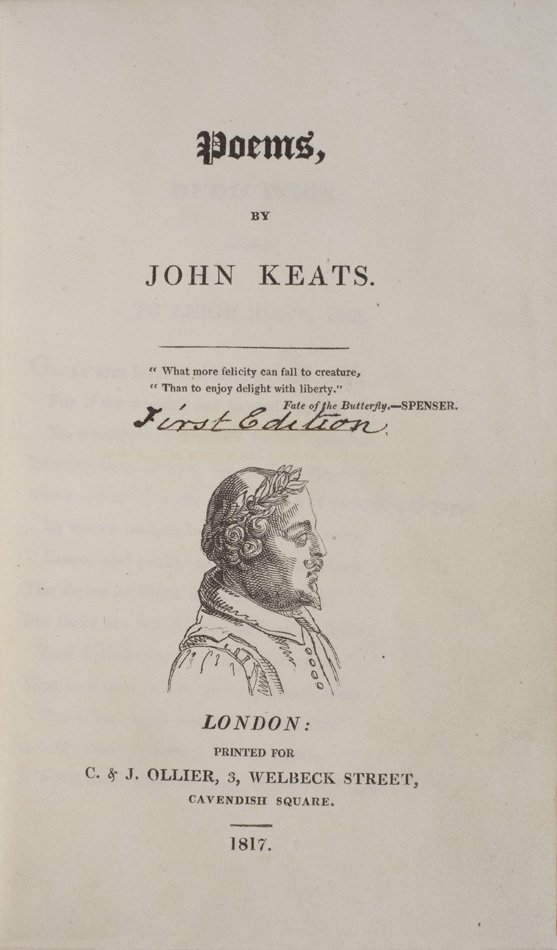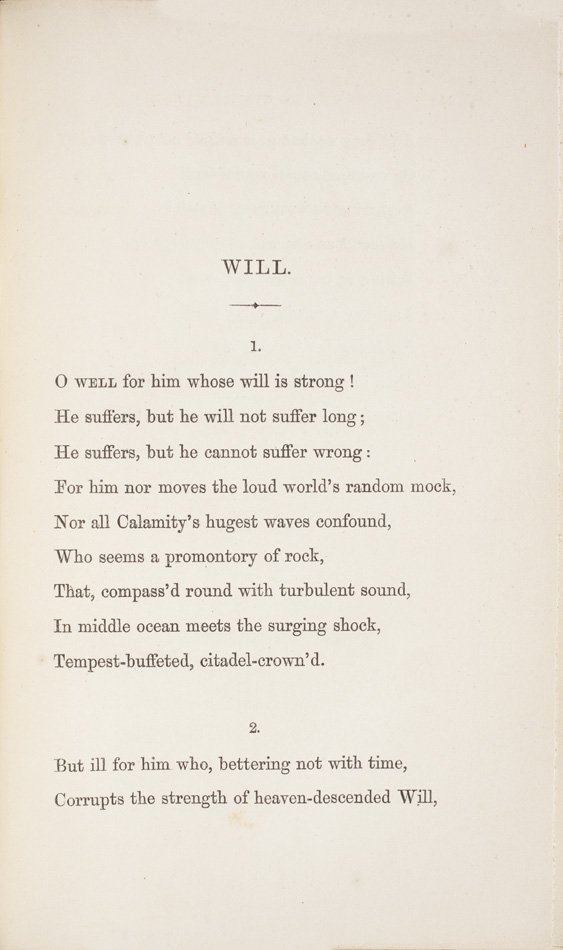Gerald N. Wachs: A Consummate Collector
Gerald ("Jerry") Wachs, MD (1937-2013) is widely remembered for his warmth, intelligence, generosity, sense of humor, and above all devotion to his family. After receiving his medical degree from the University of Illinois at Chicago's College of Medicine, he spent nearly 20 years at Schering (now Merck) as a senior associate medical director, where he was responsible for the FDA's approval of over 20 new drug applications, followed by 18 years in a private dermatological practice.
Dr. Wachs was an inveterate collector. As he put it, "I have conclusive evidence of a heretofore-unknown scientific phenomenon. There is a gene for 'collectors.' I have it, in spades! ... Over the years I have collected books, stamps, coins, art prints, tropical fish, baseball cards ... and numerous other absolutely must-have objects."
Dr. Wachs formed a number of collections that relate directly to his interests. A proud member of the Sherlock Holmes society, Baker Street Irregulars, he collected printed materials relating to Holmes and 1,000 lapel pins, the largest collection in the world. He loved theater, and the Wachs Collection of Tom Stoppard, a promised gift to the University of Chicago Library, was the basis for a scholarly bibliography he co-authored with English literature scholar William Baker, Tom Stoppard: A Bibliographical History (2010). An avid fan of baseball and member of the Society for American Baseball Research, he also collected books about the game, and, in particular, his beloved Chicago Cubs.
The collection of which he was most proud was the Gerald N. Wachs Collection of Nineteenth-Century English Poetry. Like many collections, it began somewhat serendipitously and quite modestly. But over a period of more than 40 years, working with bookseller Stephen Weissman, it grew to nearly 900 items.
Books on view in this case include those that had special significance for the collector and the formation of the collection, as well as examples of exceptional rarities that he was able to acquire.
The Biography of a Collection
In March 1970, Dr. Wachs read an article about New York rare book shops. Looking for a birthday present for his wife, Glorya, he visited one of the stores mentioned in it, Ximenes Rare Books, Inc. Ximenes was founded by Stephen Weissman and two friends in 1961 when they were undergraduates at Harvard. They were all devotees of the Sunday Observer's cryptic crossword puzzle. With collegiate whimsy they took the name of the Inquisition-era Cardinal Ximenes from the pseudonym–traditionally chosen to recognize the devilishly difficult nature of the puzzle – of one of the Observer's compilers (or "setters"). Weissman bought out his partners and moved his business to New York. When Dr. Wachs stopped by, he recommended a first edition of Bryon's Hebrew Melodies (1815), which includes "She Walks in Beauty."
Thus began a professional collaboration and personal friendship that lasted over forty years. They decided to use The New Cambridge Bibliography of English Literature (1969-77) as their road map and discussed at length whether or not the goal should be to acquire a copy of everything listed in volume 3, which covers 1800-1900. As Steve Weissman recalls, "To some extent Jerry and I were both stamp collectors by instinct, and shared a philatelic predilection for completeness. At the same time I was hesitant about applying the same principle to collecting books.... my instinct was that for certain obviously common titles we should hold out for inscribed copies, or copies with interesting provenance."
As the collection evolved, they were able to apply these criteria to the books selected for the Wachs collection. As opportunities arose, they replaced copies purchased early on or supplemented them by ones in finer condition or with association significance.
Starting with Hebrew Melodies, which is "Wachs No. 1," each item added to the collection was given a sequential accession number. The "Wachs number," included on each item label in the exhibition, thus indicates when in the development of the collection a particular item was acquired and makes it possible to trace its growth.
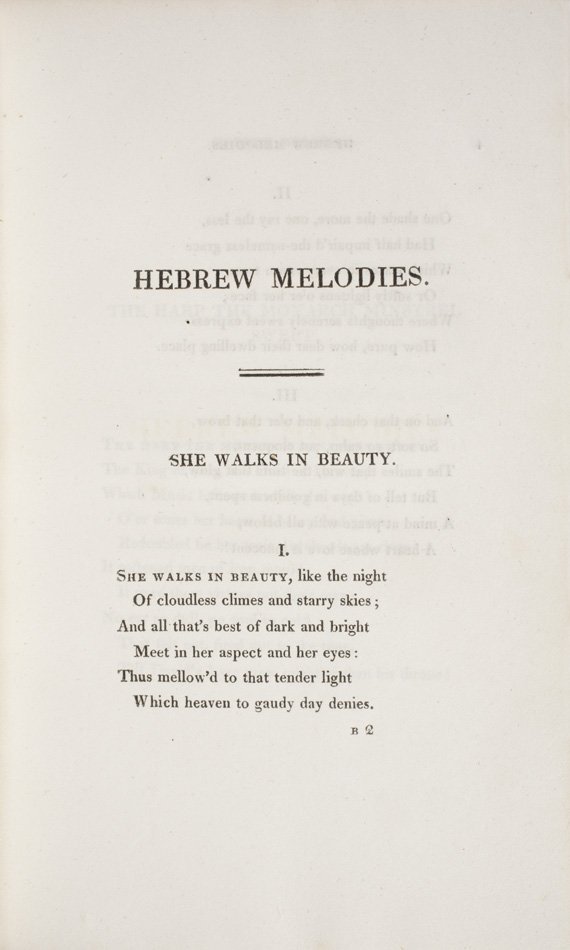
London: Printed for John Murray, 1815
Gift of Deborah Wachs Barnes, Sharon Wachs Hirsch, Judith Pieprz, and Joel Wachs, AB’92
This was the first title acquired for the Wachs collection. As the collection developed, standards for condition were raised; the second copy is in a lovely binding of the period. In this copy, in the original wrappers, the second page of Murray's advertisements carries a notice for Jacqueline, by Samuel Rogers, and Thomas Campbell's The Selected Beauties is described as "in the press."
Wachs Nos. 1 and 268
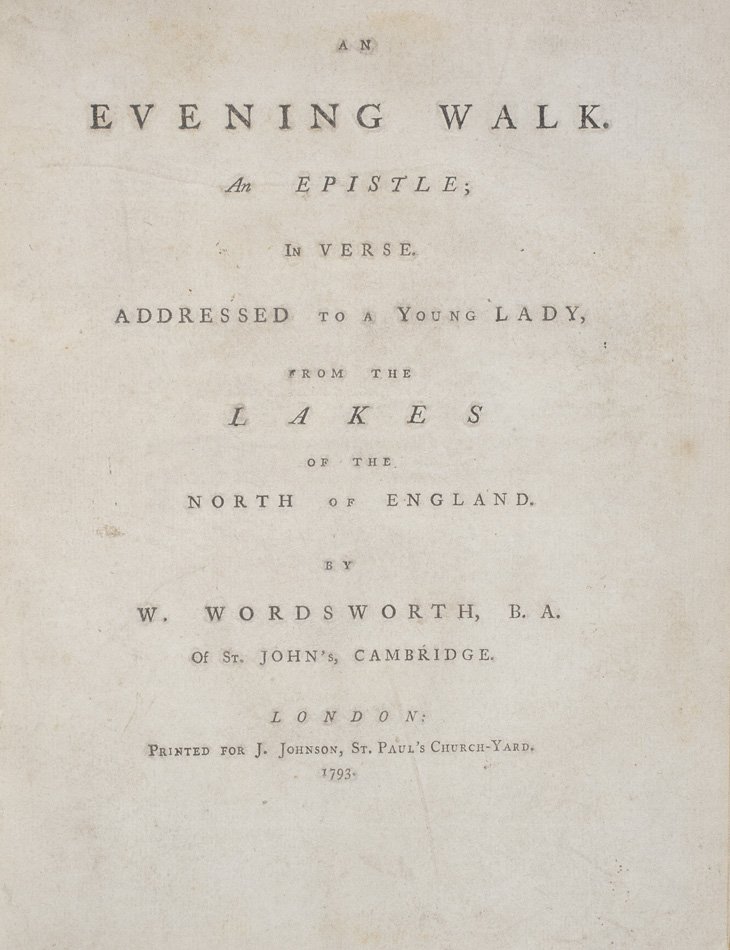
William Wordsworth (1770-1850)
London: printed for J. Johnson, 1793
On loan from Deborah Wachs Barnes, Sharon Wachs Hirsch, Judith Pieprz, and Joel Wachs, AB’92
Wordsworth's first book, published when he was 23. His Descriptive Sketches, advertised on the last page as "just published," was in fact printed slightly later the same year.
Wachs No. 863
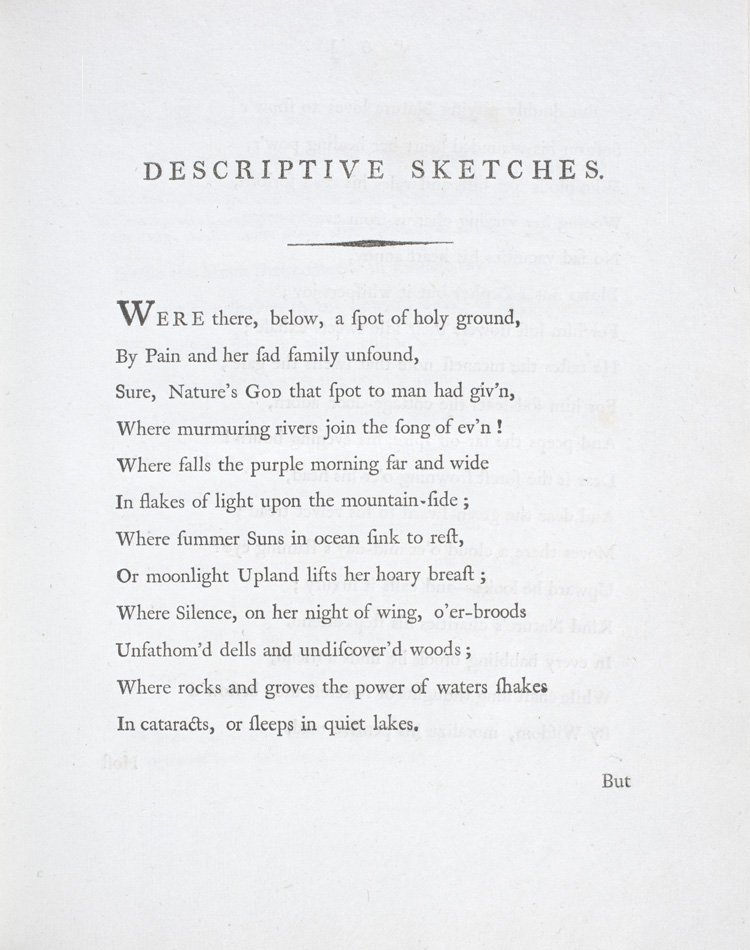
William Wordsworth (1770-1850)
London: printed for J. Johnson, 1793
On loan from Deborah Wachs Barnes, Sharon Wachs Hirsch, Judith Pieprz, and Joel Wachs, AB’92
London: printed for J. Johnson, 1793
On loan from Deborah Wachs Barnes, Sharon Wachs Hirsch, Judith Pieprz, and Joel Wachs, AB'92
Wordsworth's second book, a poem written in the same meter, heroic couplets, and printed in the same quarto format as his first, An Evening Walk.
Wachs No. 864
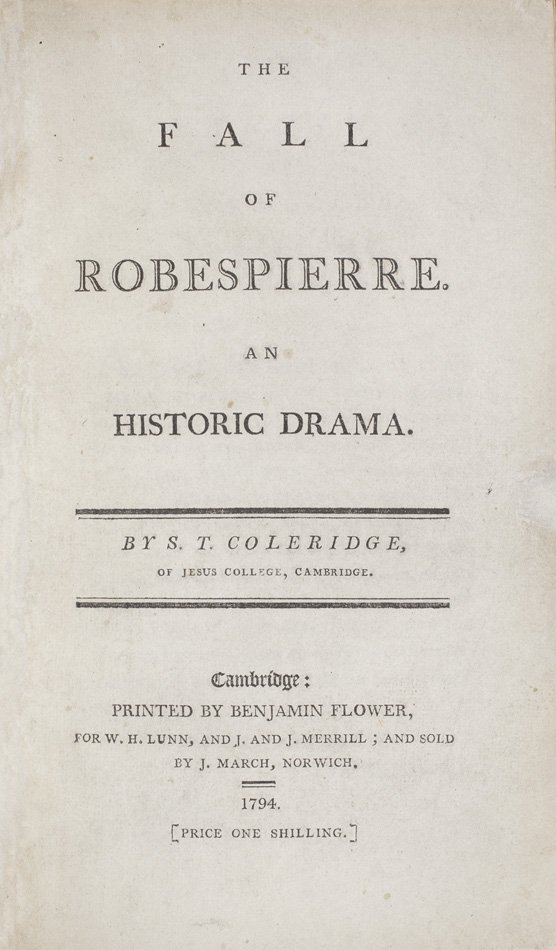
Samuel Taylor Coleridge (1772-1834) [and Robert Southey (1774-1843)]
Cambridge: Printed by Benjamin Flower, for W. H. Lunn, and J. and J. Merrill, 1794
On loan from Deborah Wachs Barnes, Sharon Wachs Hirsch, Judith Pieprz, and Joel Wachs, AB’92
Coleridge's first book. Although he is not mentioned on the title page, major portions of this verse drama were written by Robert Southey. A leaf of advertisements at the end contains proposals for printing by subscription Coleridge's "Imitations from the Modern Latin Poets," which never appeared.
Wachs No. 13
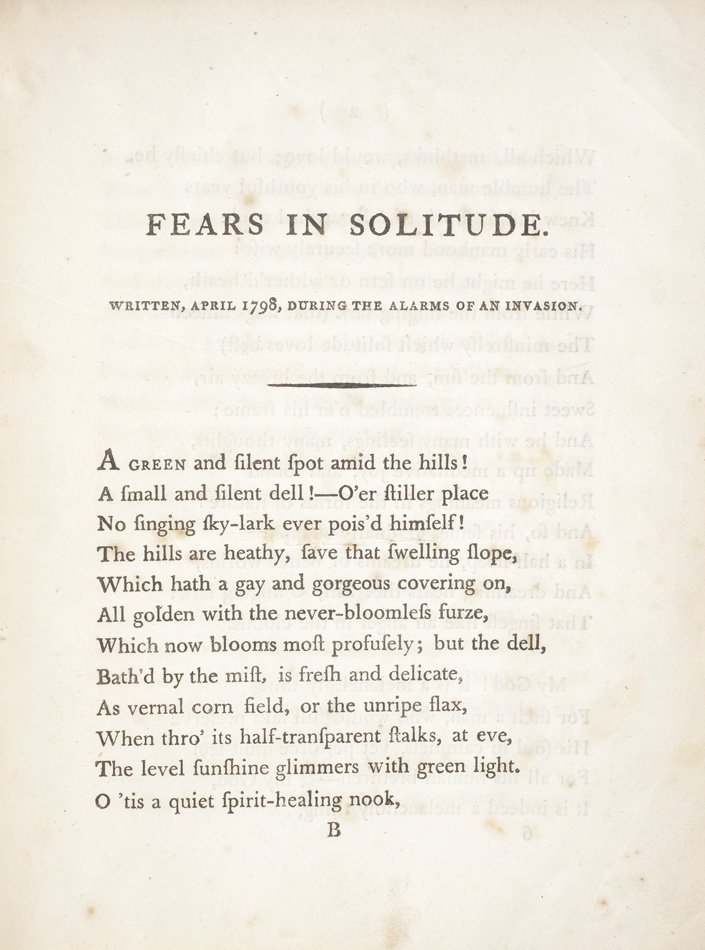
Samuel Taylor Coleridge (1772-1834)
London: Printed for J. Johnson, 1798
On loan from Deborah Wachs Barnes, Sharon Wachs Hirsch, Judith Pieprz, and Joel Wachs, AB’92
This pamphlet of three poems was one of the most difficult Coleridge titles to obtain for the Wachs collection.
Wachs No. 712
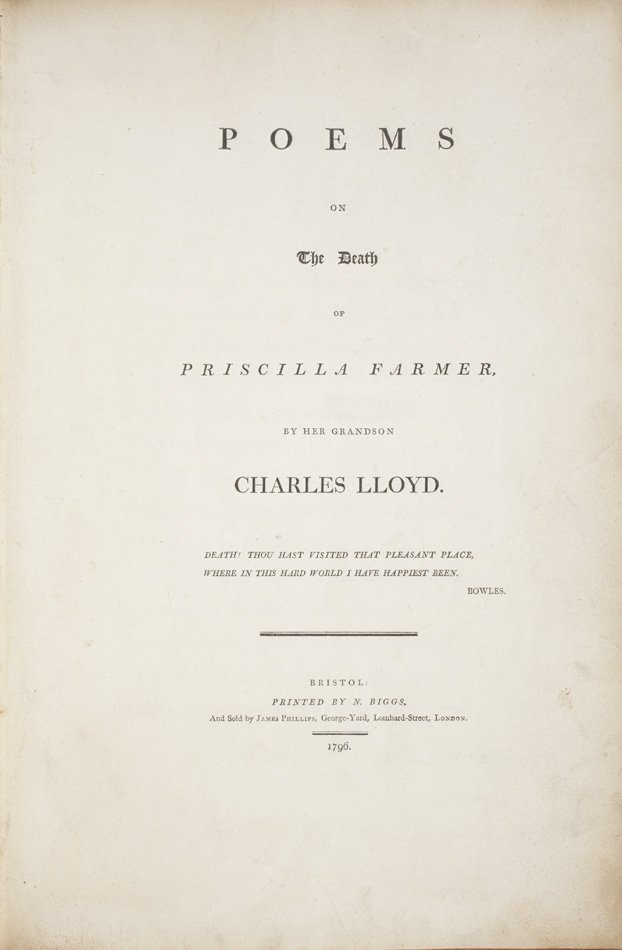
Charles Lloyd (1775-1839)
Bristol: printed by N. Biggs, 1796
On loan from Deborah Wachs Barnes, Sharon Wachs Hirsch, Judith Pieprz, and Joel Wachs, AB’92
Charles Lloyd's second publication, which includes an introductory sonnet by Samuel Taylor Coleridge, as well as a three-page poem, entitled "The Grandam," which is headed: "The following beautiful fragment was written by Charles Lamb of the India-House." At this time Lloyd had just been introduced to Lamb by Coleridge.
Wachs No. 632
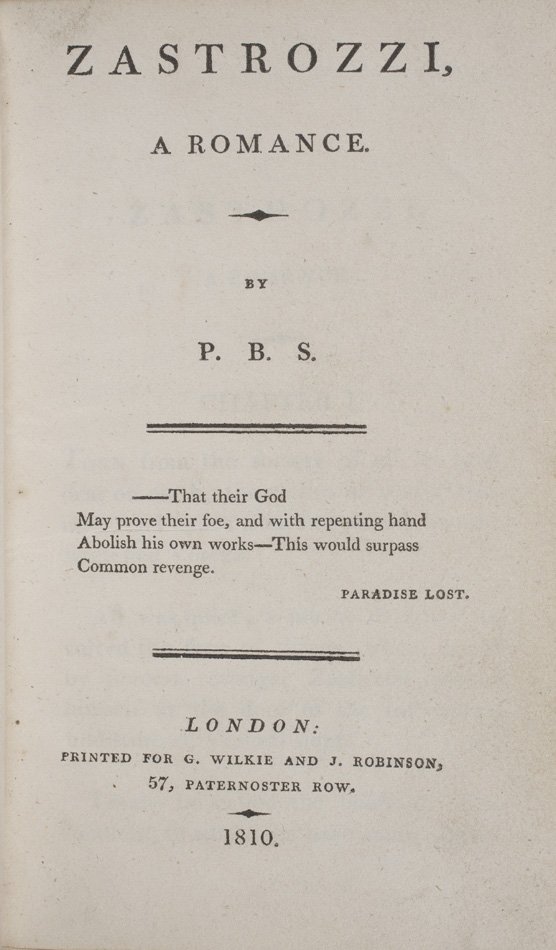
[Percy Bysshe Shelley (1792-1822)]
London: printed for G. Wilkie and J. Robinson, 1810
On loan from Deborah Wachs Barnes, Sharon Wachs Hirsch, Judith Pieprz, and Joel Wachs, AB’92
Shelley's first book, a gothic romance written at the age of 16 while he was at Eton, and published about a year later.
Wachs No. 394
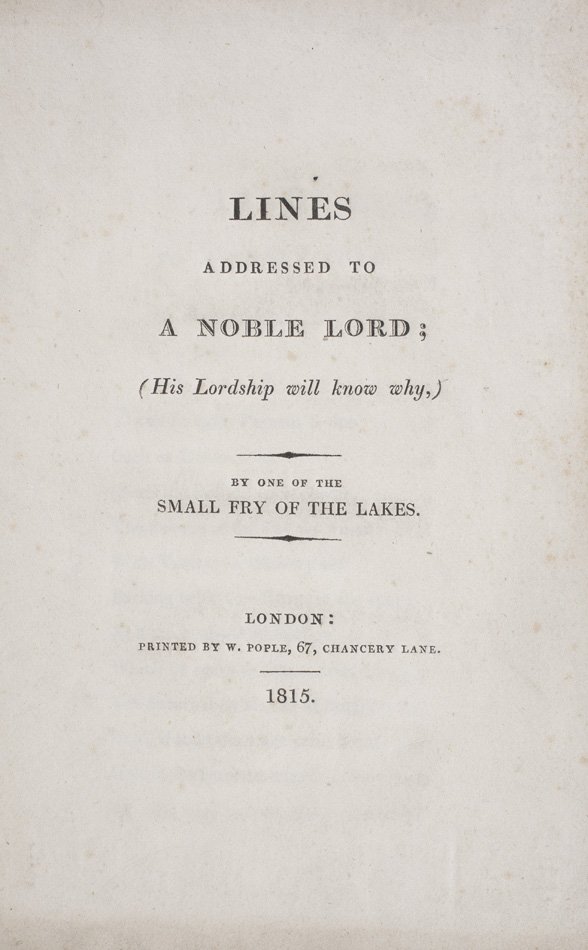
[Mary Barker (active 1798) and William Wordsworth (1770-1850)]
London: printed by W. Pople, 1815
On loan from Deborah Wachs Barnes, Sharon Wachs Hirsch, Judith Pieprz, and Joel Wachs, AB’92
This privately printed poem is a very early example of Byroniana, or works about or relating to the poet. Mary Barker was a protegée of Robert Southey, through whom she met Wordsworth in 1814. At about this time Southey and Wordsworth were visited by the Scottish poet James Hogg, who showed around a letter he had received from Byron in which the "Lakers" were dismissively characterized as "Pond Poets." Mary Barker wrote this reply, with much involvement from Wordsworth. The poem consists of 16 stanzas, varying in length from 10 to 16 lines. Of these, Wordsworth contributed a couplet to stanza VIII and wrote most or all of stanzas XII to XVI.
Wachs No. 786
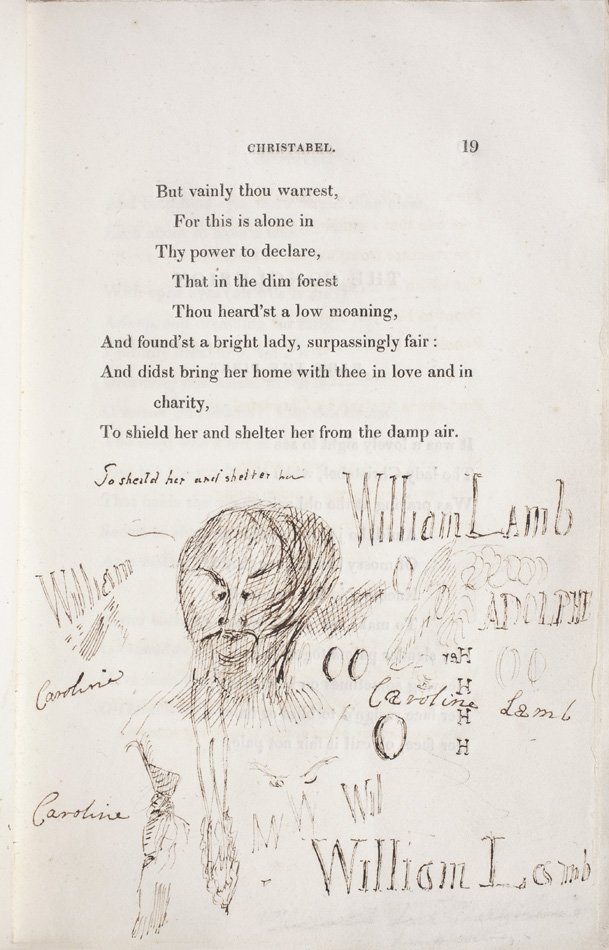
Samuel Taylor Coleridge (1772-1834)
London: Printed for John Murray, by William Bulmer and Co., 1816
On loan from Deborah Wachs Barnes, Sharon Wachs Hirsch, Judith Pieprz, and Joel Wachs, AB’92
This volume was Lady Caroline Lamb's copy, with her scribblings on page 19. There is also a slightly grotesque drawing of a half-length figure. Lady Caroline's affair with Byron had broken off in 1813, and her mental state had deteriorated; in 1816 she was on the verge of a divorce. That same year she also published Glenarvon, a roman à clef in which Byron played a major role.
Wachs No. 52
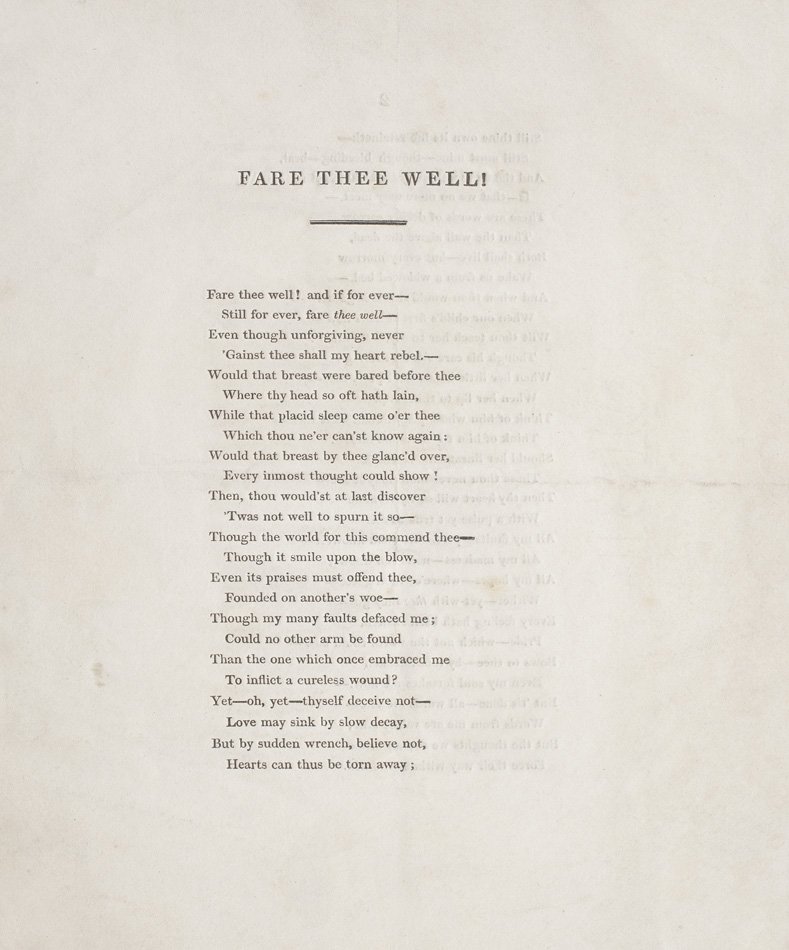
George Gordon, Lord Byron (1788-1824 )
[London: s.n., 1816]
On loan from Deborah Wachs Barnes, Sharon Wachs Hirsch, Judith Pieprz, and Joel Wachs, AB’92
A dramatic poem written on the occasion of Lord Byron's separation from his wife, just prior to his final departure for the Continent. This first edition was privately printed, apparently in a very small edition. The poem was widely pirated and reprinted. In its present original form, it is one of the great Byron rarities.
Wachs No. 600
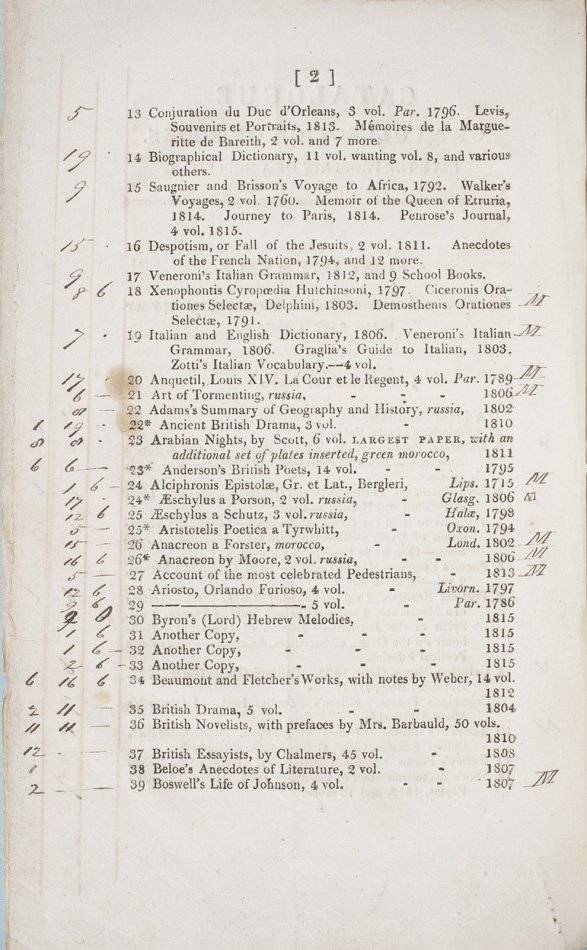
[London: R. H. Evans, 1816]
On loan from Deborah Wachs Barnes, Sharon Wachs Hirsch, Judith Pieprz, and Joel Wachs, AB'92
An extremely scarce auction catalogue for the sale of Lord Byron's library before his flight from England in 1816, the list includes the prices realized written in the margins. The principal buyer was Byron's publisher John Murray, marked with an 'M' in this copy, who acquired 96 out of the 383 lots.
Wachs No. 137
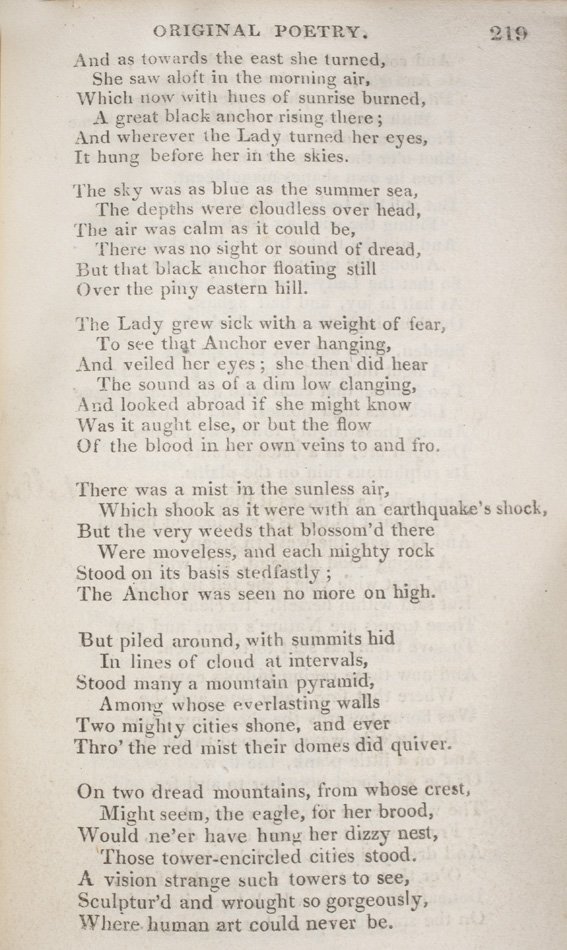
Leigh Hunt (1784-1859)
London: printed for C. and J. Ollier, [1818]
On loan from Deborah Wachs Barnes, Sharon Wachs Hirsch, Judith Pieprz, and Joel Wachs, AB’92
The first of five pocket diaries issued annually by Hunt over five years. A substantial portion of the book is essentially blank, to be used for "appointments and other memoranda." A section near the end (pages 217-226) entitled "Original Poetry," includes seven poems, all signed with single Greek capital letters. Two of these poems are by Keats ("The Human Seasons" and "Sonnet to Ailsa Rock"), one is by Shelley ("Marianne's Dream"), two are by Brian Waller Procter ("Hymn to Diana" and "Sonnet Descriptive of a Painting by Nicolas Poussin"), and two by Leigh Hunt himself ("Power and Gentleness" and "The Summer of 1818").
Wachs No. 442
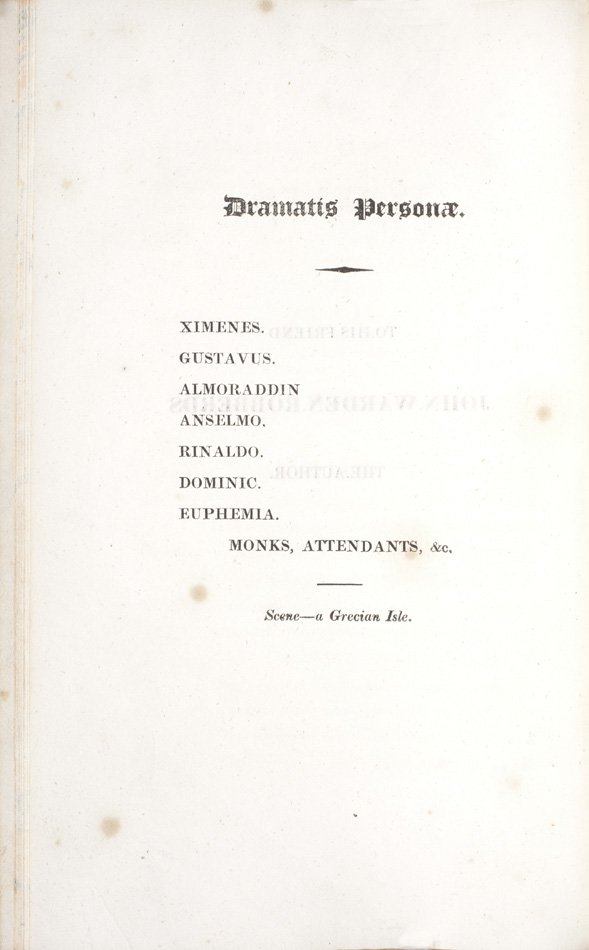
John William Polidori (1795-1821)
London: Published by Longman, Hurst, Rees, Orme, and Brown, 1819
On loan from Deborah Wachs Barnes, Sharon Wachs Hirsch, Judith Pieprz, and Joel Wachs, AB'92
Polidori served as Byron's secretary-physician. His gothic novel, The Vampyre (1819), was written at the Villa Diodati, near Geneva, where Mary Shelley began to write Frankenstein.
Wachs No. 266
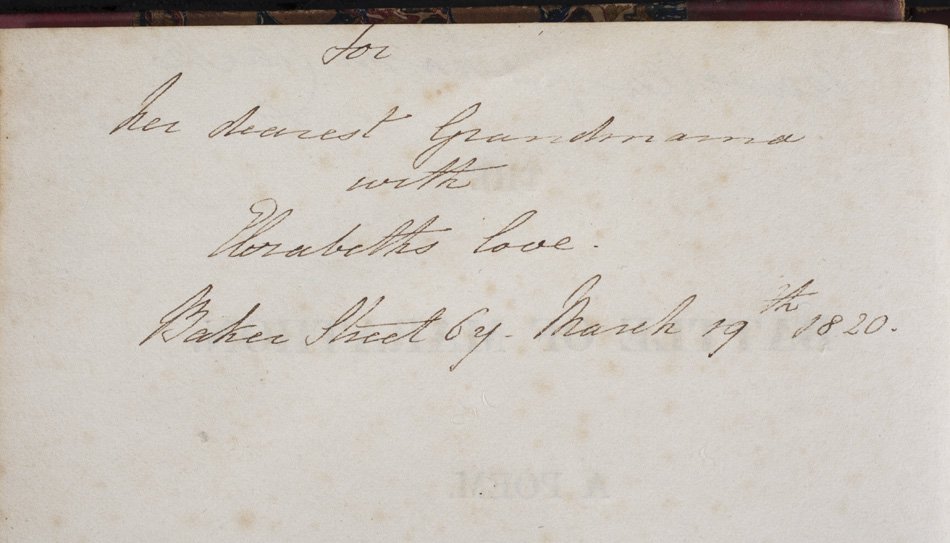
Elizabeth Barrett Browning (1806-1861)
London: printed for W. Lindsell, 1820
On loan from Deborah Wachs Barnes, Sharon Wachs Hirsch, Judith Pieprz, and Joel Wachs, AB’92
The poet's first book, privately printed in an edition of 50 copies; of these only 15 copies are known to survive. At the age of eight Browning became fascinated by Alexander Pope's translations of Homer, and when she was 10 she began to study Greek. Within a year she began to compose her own Homeric poem, and this was in time set in type as a gift from her father on the occasion of her 14th birthday. A presentation copy, inscribed by the author on the verso of the title-page: "For her dearest Grandmamma with Elizabeth's love, Baker Street 67, March 19th, 1820."
Wachs No. 700
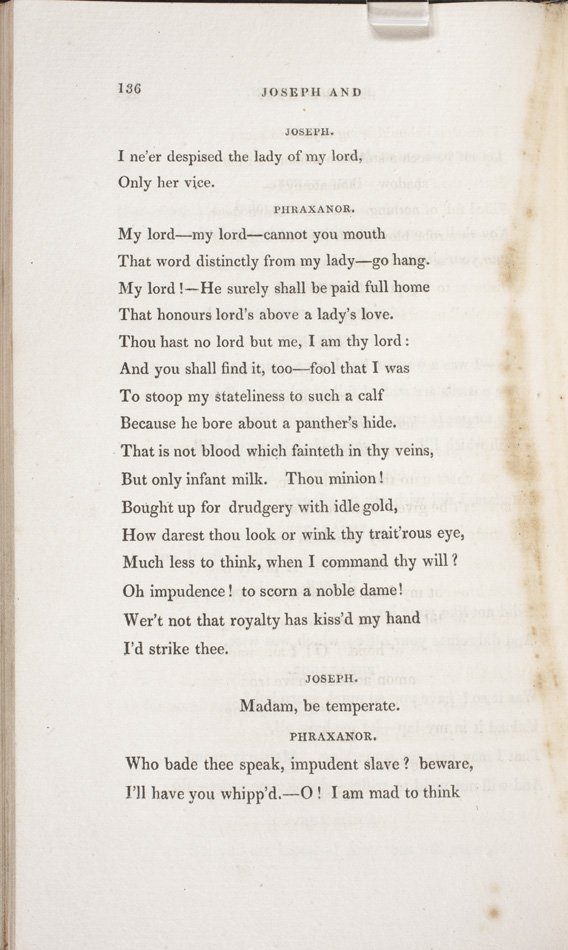
[Charles Wells (1800-1879)]
By H. L. Howard [pseud]. London: Printed for G. and W. B. Whittaker, 1824
Gift of Deborah Wachs Barnes, Sharon Wachs Hirsch, Judith Pieprz, and Joel Wachs, AB’92
This ambitious verse drama was mostly ignored when it was published, although William Hazlitt called it "not only original but aboriginal."
Wachs No. 774
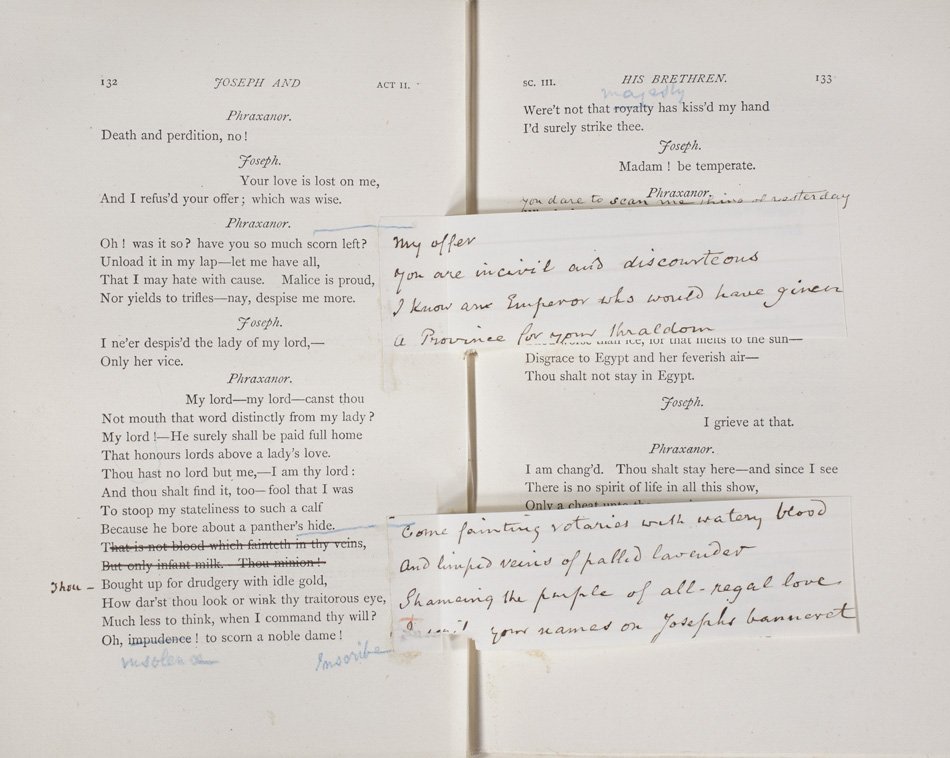
Charles Wells (1800-1879)
London: Chatto and Windus, 1876
On loan from Deborah Wachs Barnes, Sharon Wachs Hirsch, Judith Pieprz, and Joel Wachs, AB’92
The second edition, substantially revised. Wells was "rediscovered" when he came to the attention of Dante Gabriel Rossetti. In February, 1875, Swinburne published an enthusiastic article about Wells in The Fortnightly Review, entitled "An Unknown Poet." A revised version of his article appears as a preface to this new edition. This copy belonged to Wells himself, who spent the remaining three years of his life making extensive alterations to the text for a third edition, which was never published.
Wachs No. 3
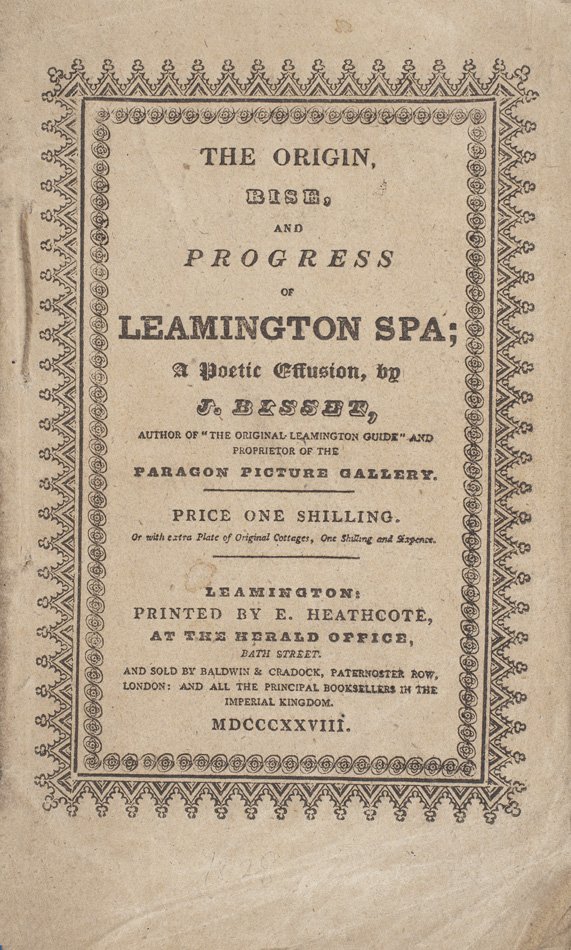
James Bisset (1762?-1832)
Leamington: Printed by E. Heathcote, 1828
Gift of Deborah Wachs Barnes, Sharon Wachs Hirsch, Judith Pieprz, and Joel Wachs, AB’92
Acquired in 1977, this poem was a gift from Stephen Weissman to Dr. Wachs on his fiftieth birthday. The poet is listed on the title page as the "proprietor of the Paragon Picture Gallery" and was an engraver and illustrator. The pamphlet includes engraved examples of calling and trade cards advertising local merchants.
Wachs No. 139
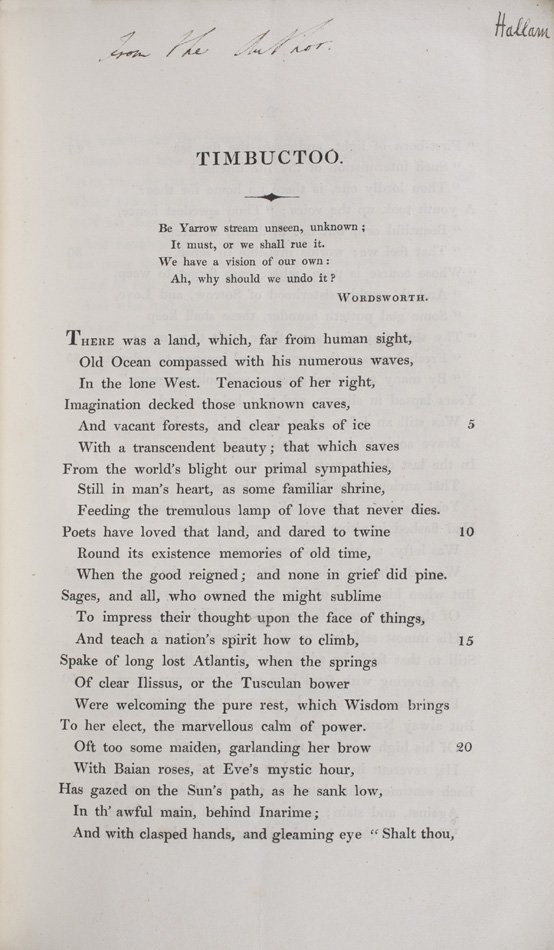
[Arthur Henry Hallam (1811-1833)]
[Cambridge: s.n., 1829]
On loan from Deborah Wachs Barnes, Sharon Wachs Hirsch, Judith Pieprz, and Joel Wachs, AB’92
Hallam's first separate publication, an anonymous private printing of a poem submitted for a Cambridge University Chancellor's Gold Medal eventually won by Tennyson. The friendship between Hallam and Tennyson began with the submission of their poems to this competition.
Wachs No. 645
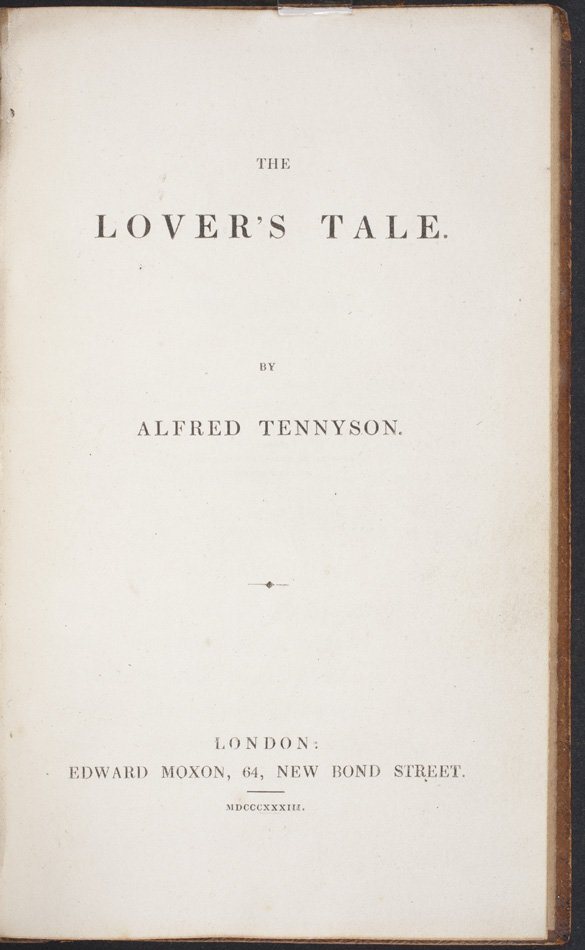
Alfred, Lord Tennyson (1809-1892)
London: Edward Moxon, 1833
On loan from Deborah Wachs Barnes, Sharon Wachs Hirsch, Judith Pieprz, and Joel Wachs, AB’92
Tennyson wrote this poem in 1828, when he was 19 years old. In 1832 the text was set in type, along with the 30 other pieces which eventually formed his Poems of 1833. At the last minute, Tennyson decided that this poem was in need of substantial revision, and it was not included in the volume. Before the types were dispersed, a few copies were printed at Tennyson's expense. Eight copies, including this one, are known to survive.
Wachs No. 653
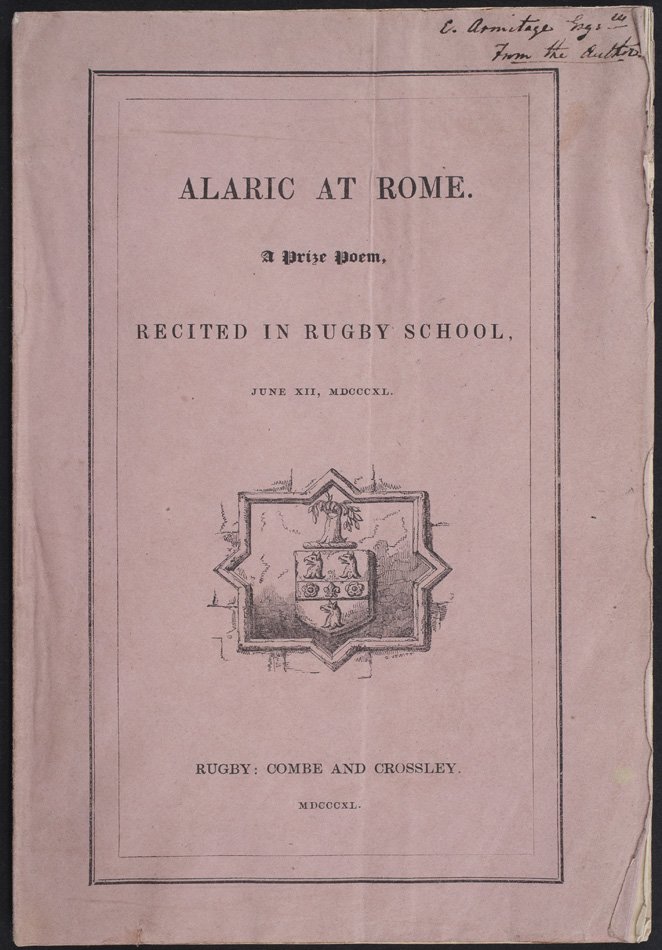
Matthew Arnold (1822-1888)
Rugby: Combe and Crossley, 1840
On loan from Deborah Wachs Barnes, Sharon Wachs Hirsch, Judith Pieprz, and Joel Wachs, AB’92
Matthew Arnold's first publication, an unusual prize poem because it was printed anonymously and may not have been intended for general circulation. The text was first identified as Arnold's by Edmund Gosse in 1888. The only known presentation copy of this work, it is inscribed to a fellow student by Arnold on the front wrapper, "E. Armitage Esqr. from the Author."
Wachs No. 800
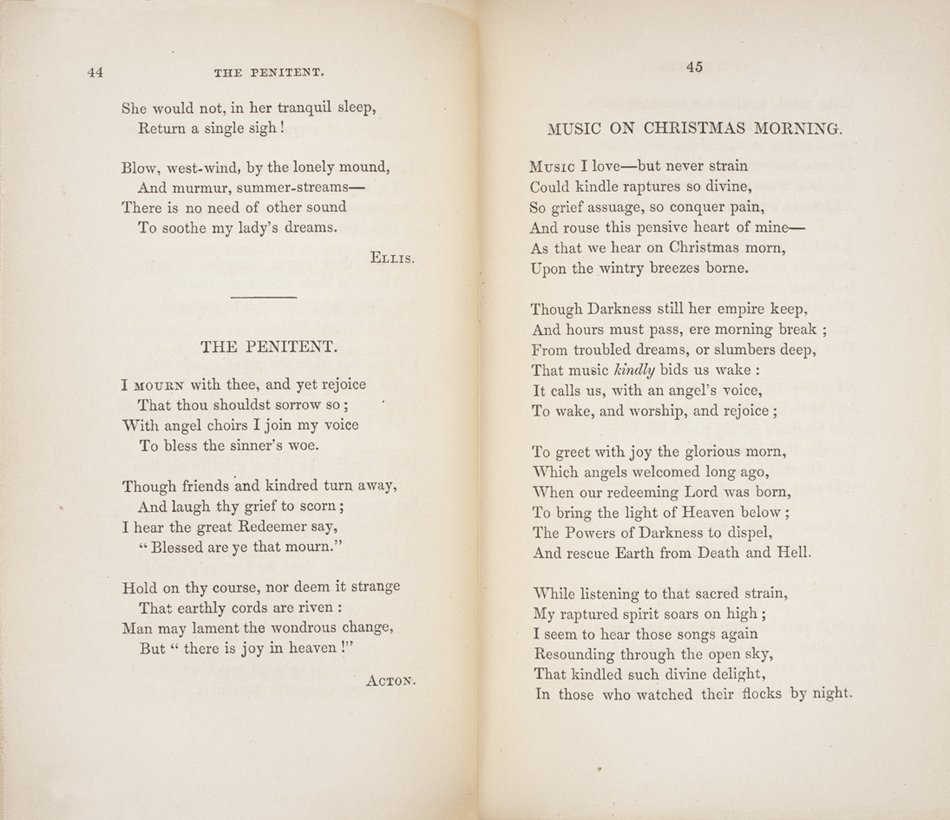
Charlotte Brontë (1816-1855), Emily Brontë (1818-1848), and Anne Brontë (1820-1849)
London: Aylott and Jones, 1846
On loan from Deborah Wachs Barnes, Sharon Wachs Hirsch, Judith Pieprz, and Joel Wachs, AB’92
The first work published by the Brontë sisters. The original printing, arranged by Charlotte Brontë, consisted of 1,000 copies; after a year the publishers had sold only two. Several more had been sent to the copyright libraries, and a few others were given away. After the appearance of Jane Eyre in 1847, the publishers Smith, Elder and Co. took over the remaining 961 sets of sheets and re-issued the volume with their own title page.
Wachs No. 129
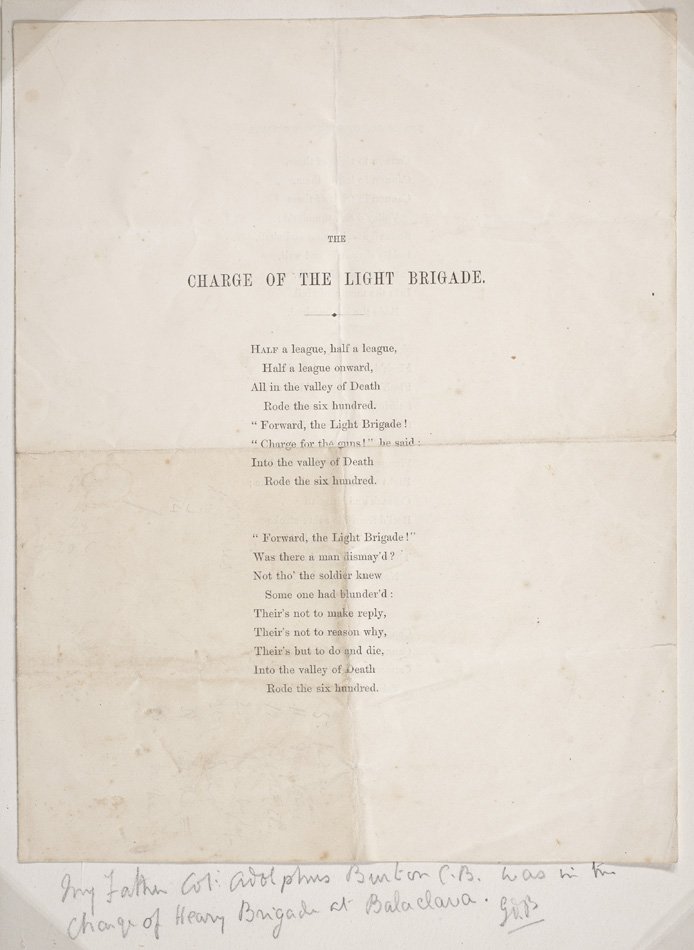
Alfred, Lord Tennyson (1809-1892)
[London: s.n., 1855]
On loan from Deborah Wachs Barnes, Sharon Wachs Hirsch, Judith Pieprz, and Joel Wachs, AB’92
The "charge" took place during the Crimean War, in October 1854, and was reported in the London Times in November. Tennyson wrote his poem on December 2, and sent it to John Forster, who printed it in The Examiner on December 9, 1854. Tennyson revised the poem considerably before it was included in Maud, published in July 1855. Shortly afterwards he rewrote it further. He had 1,000 copies of this final text printed as a leaflet in 1855, to be sent to the Crimea for distribution "among the brave soldiers before Sebastopol."
Wachs No. 144
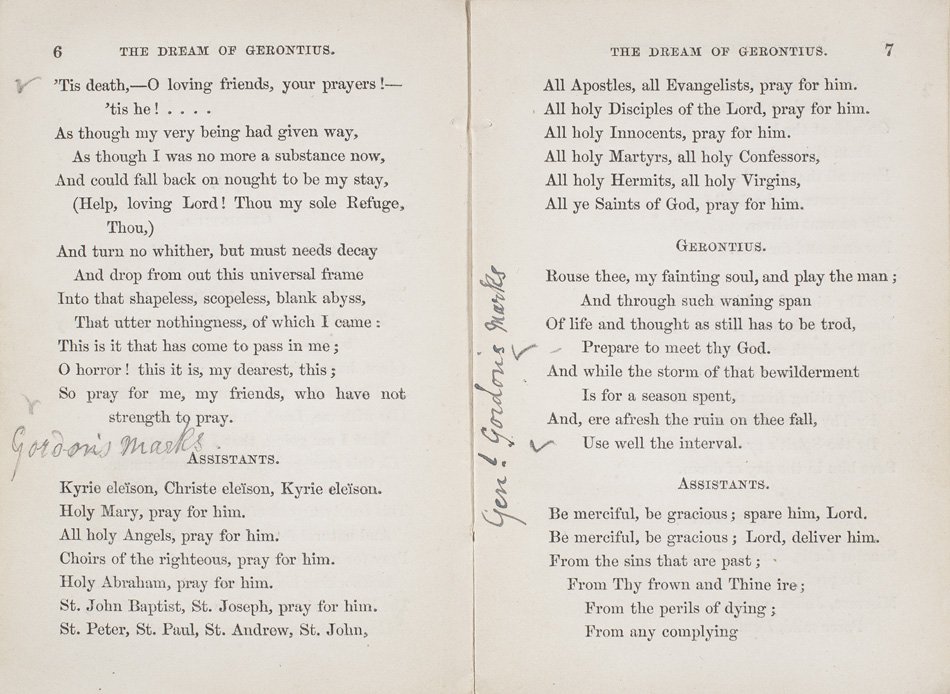
[John Henry Newman (1801-1890)]
London: Burns, Lambert, and Oates, 1866
On loan from Deborah Wachs Barnes, Sharon Wachs Hirsch, Judith Pieprz, and Joel Wachs, AB’92
A presentation copy, the recipient, M. J. Roberts, has added the note: "The pencil marks [which appear several times in the text] are an exact copy of those in General Gordon's book, sent from Khartoum to his sister in England. The original was lent to me by Cardinal Newman, being sent to him for a few days by Gen. Gordon's sister."
Wachs No. 295
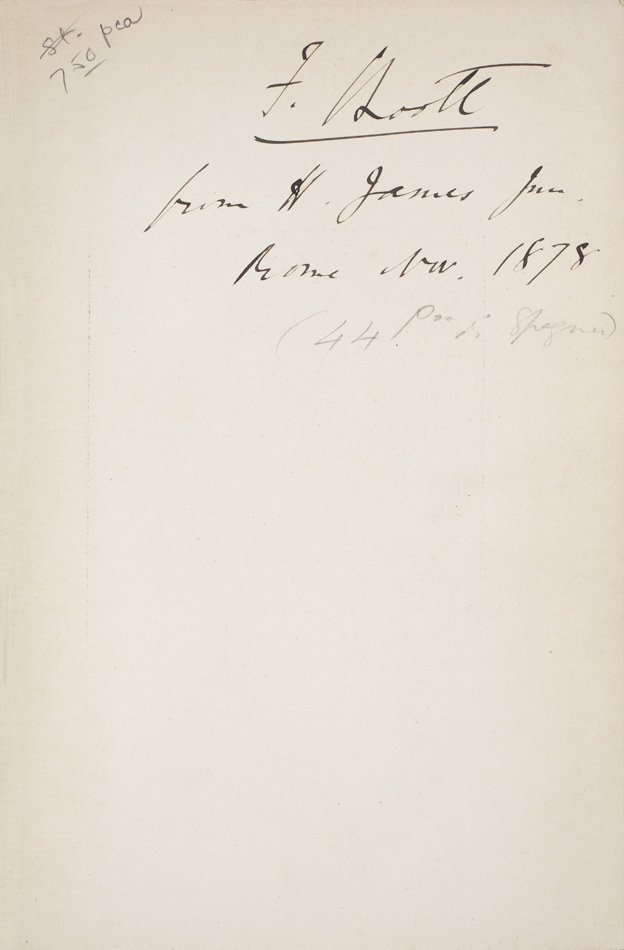
Algernon Charles Swinburne (1837-1909)
London: Chatto and Windus, 1878
Gift of Deborah Wachs Barnes, Sharon Wachs Hirsch, Judith Pieprz, and Joel Wachs, AB’92
The volume is inscribed on the front flyleaf, "F. Boott from H. James Jun. Rome, Nov. 1878." The novelist Henry James used "Jun." after his surname until his father's death; beneath the inscription, possibly in the same hand, is his address in Rome, 44 Piazza di Espagna. The recipient was Francis Boott, who was the model for Gilbert Osmond in Portrait of a Lady.
Wachs No. 112
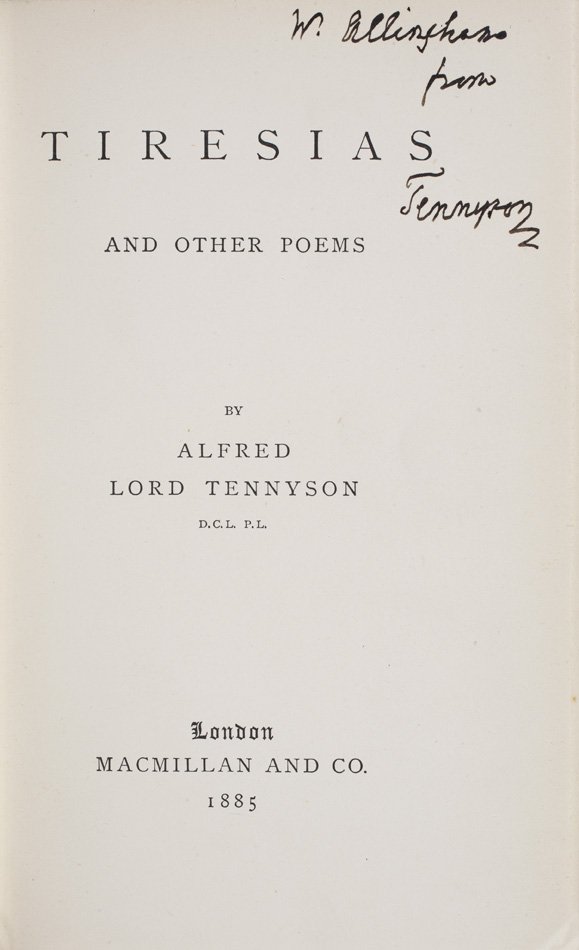
Alfred, Lord Tennyson (1809-1892)
London: Macmillan and Co., 1885
Gift of Deborah Wachs Barnes, Sharon Wachs Hirsch, Judith Pieprz, and Joel Wachs, AB’92
A presentation copy, inscribed on the title page: "W. Allingham from Tennyson." William Allingham was an Irish poet who was a close friend of Tennyson's for about 50 years. The volume, acquired at about the time the Wachs collection was just getting started, represents the decision to seek out "special" copies, especially of works that were relatively easy to find on the market.
Wachs No. 5
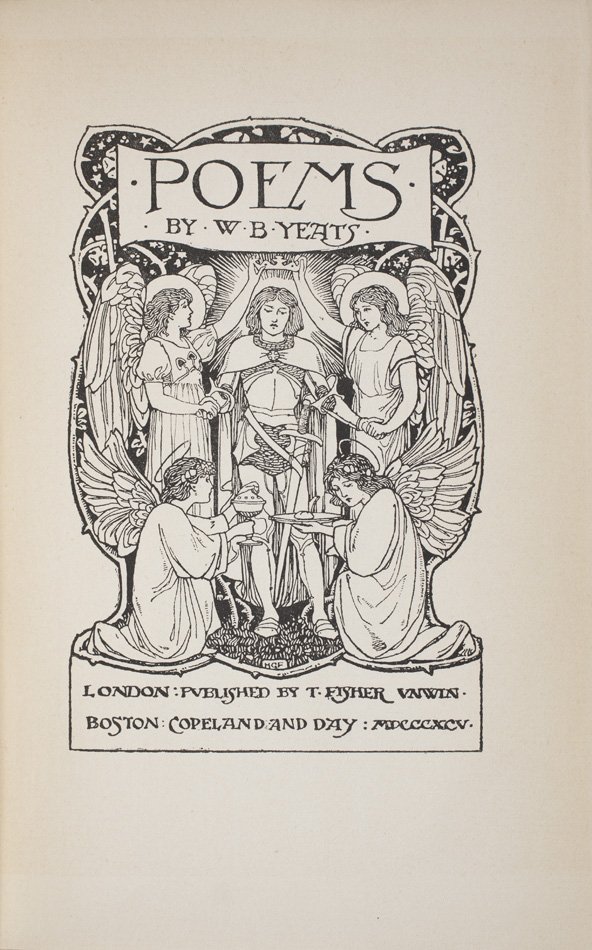
William Butler Yeats (1865-1939)
London: published by T. Fisher Unwin; Boston: Copeland and Day, 1895
Gift of Deborah Wachs Barnes, Sharon Wachs Hirsch, Judith Pieprz, and Joel Wachs, AB’92
The American issue, with a cancel title page naming the Boston publisher and with the name of Copeland and Day added to the foot of the spine. The print run consisted of 750 copies, of which about 200 sets of sheets were sent to America.
Wachs No. 176
